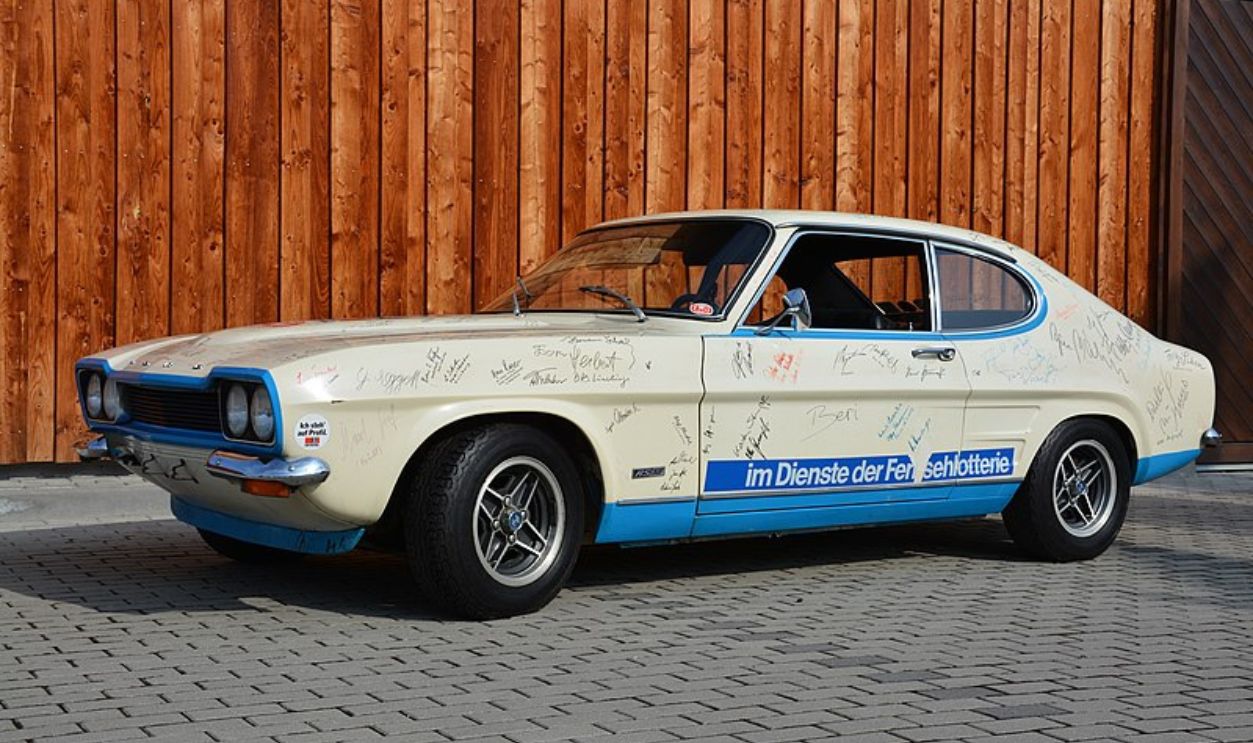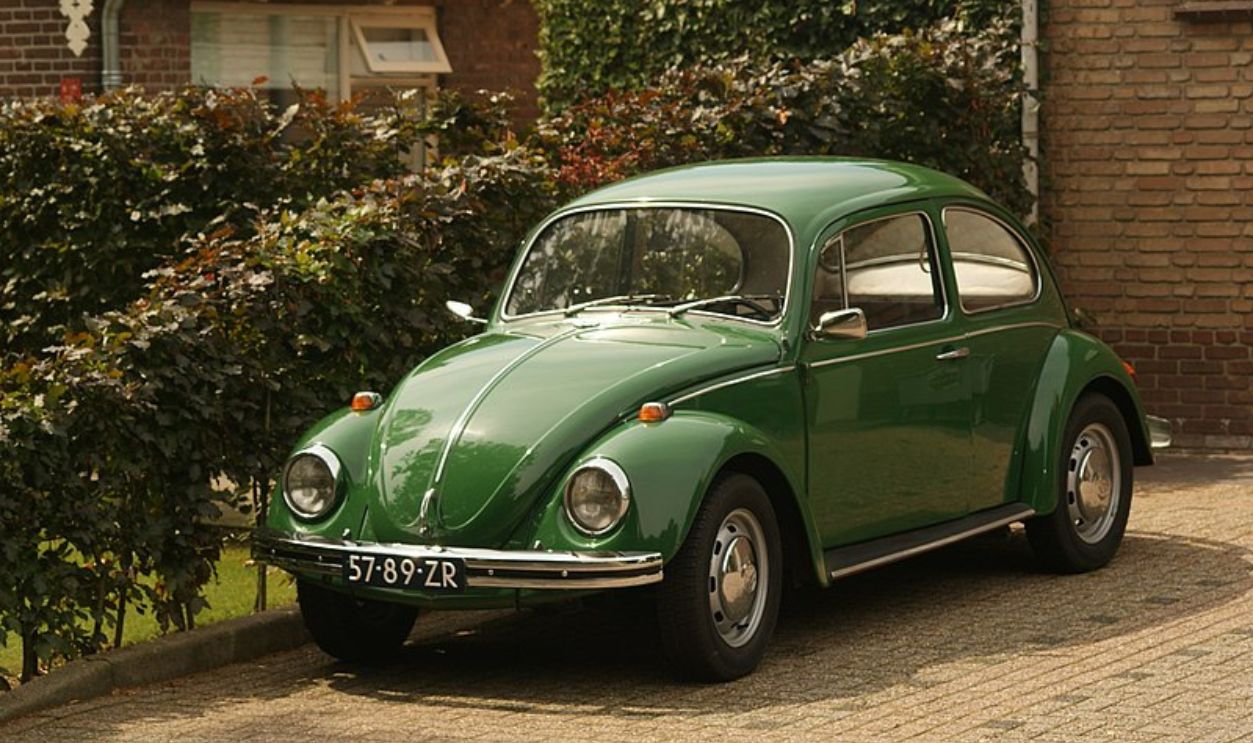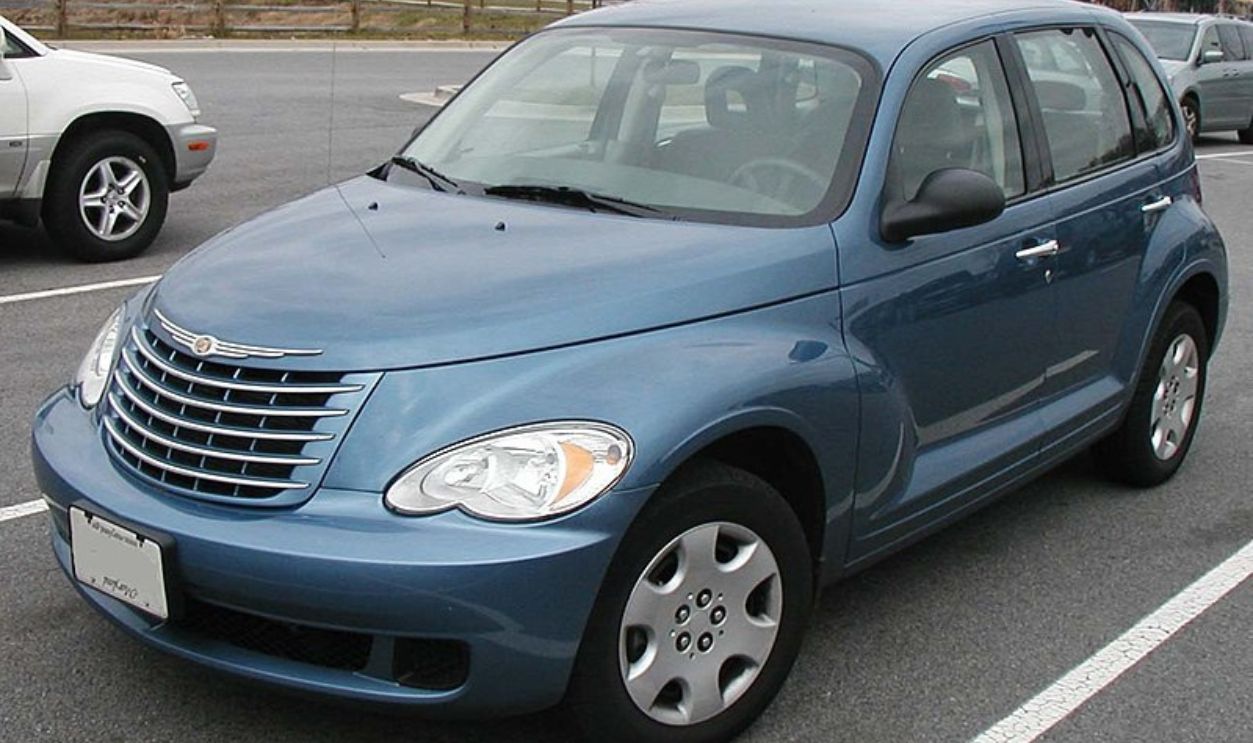Coolness Dies With Age (Sometimes)
We adore vintage cars because of their timeless beauty, but not all vehicles can hold public attraction for long. Many famous models lose their appeal and end up in the backseat of automobile history.

Vehicles That Lost Their Appeal And Why
While some cars still stand strong, these ten cars fell out of favor despite racking up sales. Some suffered from outdated designs and trends; one particular model was everywhere. Interestingly, a carmaker sent its vehicle to an early grave with questionable decisions.
 order_242, CC BY-SA 2.0, Wikimedia Commons
order_242, CC BY-SA 2.0, Wikimedia Commons
Hummer H2
After years of serving in the US military, AM General rebuilt the Humvee for civilian use in 1992. The muscle behind that move was Arnold Schwarzenegger, who fell in love with the vehicle on the set of Kindergarten Cop. His admiration paved the way for the H2.
 Alexandre Prévot, CC BY-SA 2.0, Wikimedia Commons
Alexandre Prévot, CC BY-SA 2.0, Wikimedia Commons
GM Takes The Wheel And Brings The H2
Seven years later, GM swooped in, bought the Hummer brand, and rebranded the Humvee as the H2. They released a new model in 2002 built on the Chevy Silverado platform. Although it had a 6.0-liter V8 engine with an insane appetite for fuel, buyers didn't mind—yet.
 Elise240SX, CC BY-SA 4.0, Wikimedia Commons
Elise240SX, CC BY-SA 4.0, Wikimedia Commons
Its Specs Were Larger-Than-Life
The newest Hummer in town had an unusual interior. It was somewhere between rugged and luxurious. The H2 had wide, comfortable seats and a gear selector that looked straight out of a helicopter. Schwarzenegger fell in love immediately, and several other celebrities followed suit.
Celebrities Loved The H2
By 2003, the H2 had sold over 35,000 units because its size had become a status symbol—50 Cent, Kanye West, Dennis Rodman, and NFL star Reggie Bush all owned H2s. Popular talk show host Montel Williams reportedly praised it as "the most looked-at vehicle in LA."
 Gage Skidmore, CC BY-SA 3.0, Wikimedia Commons
Gage Skidmore, CC BY-SA 3.0, Wikimedia Commons
Customizers Turned The H2 To Limos
As the H2 fan base grew, customizers stretched the H2 into limousines that could carry up to 22 people. They cut the Hummer behind the cab and extended the chassis. But when gas prices rose and the economy crashed, many avoided the 8,600-pound car.
 Everyone Sinks Starco, CC BY-SA 2.0, Wikimedia Commons
Everyone Sinks Starco, CC BY-SA 2.0, Wikimedia Commons
Soaring Gas Prices And GM Bankruptcy
By 2007, the H2's popularity became as low as its fuel economy. When sales dropped and GM went bankrupt, the carmaker axed the Hummer brand. They produced the last H2 in 2009. It was the end of an era when size mattered, and fuel efficiency was just a suggestion.
Buick Regal
Buick was one of the first mainstream brands to fit a turbocharged V6 in a car. It launched the Regal in 1973 and kept improving the model. The Regal Grand National was the first of many variations that paved Buick's way to success.
 Thomas doerfer, CC BY-SA 3.0, Wikimedia Commons
Thomas doerfer, CC BY-SA 3.0, Wikimedia Commons
The Olympic Partnership
When the 90s came, Buick improved the Regal again. This time, they added front-wheel drive, a more streamlined design, and the award-winning 3800 V6 engine. In 1996, they built the unique "Olympic Gold" edition with gold accents to celebrate their partnership with the Summer Olympics. Buick kept flexing its muscles.
 Greg Gjerdingen, CC BY 2.0, Wikimedia Commons
Greg Gjerdingen, CC BY 2.0, Wikimedia Commons
A Racing Champion
Buick was confident in its engines and went to race in NASCAR with a naturally aspirated V6 delivering 240 HP. The Regal Grand National tore up NASCAR tracks with drivers like Bill Elliott, Darrell Waltrip, and Ricky Rudd. However, the model fell behind after winning the NASCAR Manufacturers' Championship.
The World Wanted SUVs
The Regal's decline wasn't Buick's fault or failure to impress; rather, the world became obsessed with crossovers and SUVs. Despite adding all-wheel drive and a liftback model, modern designs and technology overshadowed their efforts. Then Buick released the LeSabre, and the Regal passed the torch to the next generation.
PT Cruiser
When Chrysler wanted a different vehicle from those on the market, they hired Bryan Nesbitt. This young designer drew inspiration from the curvy classics of the '30s and hot rods of the '50s and '60s. Chrysler released the PT Cruiser in April 2000, and it was a blast.
Its Unusual Design Attracted Many Buyers
The PT Cruiser had retro styling and surprising practicality, courtesy of the designer with golden hands. Chrysler also added a 2.4-liter engine. Since they unveiled the concept two years before, there were overflowing waiting lists, which was a good thing initially.
Hollywood Celebrities Weren't Left Out
A-listers like Matt Groening (The Simpsons) and Jennifer Aniston (Friends) soon snatched up the PT Cruiser. Quirky became the new cool, and many Americans welcomed the car with open hands because their favorite actors owned one. Special editions like Vogue and Dream Cruiser also solidified its status—for a while.
 Chuck Kennedy, Wikimedia Commons
Chuck Kennedy, Wikimedia Commons
Death By Complacency
After Chrysler sold 145,000 units in 2001, it got comfortable. While other carmakers were refreshing their lineups, Chrysler only added new paint colors and a convertible option. Its large fanbase didn't appreciate the absence of upgrades for the PT Cruiser, and sales started to fall.
 Scrible88, CC BY-SA 3.0, Wikimedia Commons
Scrible88, CC BY-SA 3.0, Wikimedia Commons
The PT Cruiser Became Old Cargo
To make matters worse, Chevrolet released the HHR, and Ford brought the Transit. These two vehicles diluted its unique appeal. In 2009, "Personal Transportation" sold less than 18,000 units. Like the common trend with trends, the PT Cruiser is fondly remembered but not missed.
 Charles01, CC BY-SA 4.0, Wikimedia Commons
Charles01, CC BY-SA 4.0, Wikimedia Commons
Ford Thunderbird
In 1955, Ford designed the Thunderbird to compete with Chevrolet's Corvette, which was gaining all the attention in its segment. This two-seater had a detachable hardtop and a folding fabric top. Ford then installed a 292 cubic inch V8 engine that could outrun the Corvette and make a statement.
 Jeremy, CC BY 2.0, Wikimedia Commons
Jeremy, CC BY 2.0, Wikimedia Commons
Celebrity Endorsement
Thunderbirds had several famous owners, which helped maintain their status as stylish vehicles. These included Clark Gable, the "King of Hollywood," and Frank Sinatra. When fans saw "Ol' Blue Eyes" behind the wheel, it made the Thunderbird even more desirable.
 Movie studio, Wikimedia Commons
Movie studio, Wikimedia Commons
It Became Square Birds With Cool Landau Roofs
By 1958, Ford stretched the T-Bird, added two more seats, and called it a day. The "Square Birds" were tight, but its sleek body and vinyl Landau roof made up for any discomfort. As the '60s ended, Ford made the T-Bird bigger and heavier—if only they knew.
Midlife Crisis
The 1970s weren't kind to the Thunderbird, especially when America tightened emissions regulations and gas prices increased. The mighty T-Bird soon became a heavy burden. Ford tried a retro revival in the early 2000s, but the magic had disappeared. The Thunderbird took its final flight in 2005.
 Greg Gjerdingen, CC BY 2.0, Wikimedia Commons
Greg Gjerdingen, CC BY 2.0, Wikimedia Commons
Ford Mercury Capri
Ford's rivalry tendencies didn't stop with the Thunderbird. This time, they went international, and Ford Europe designed the Mercury Capri to rival the American Mustang. It had a sleek fastback design and was marketed as "The Sexy European." At the time, it cost only $2,400.
The Capri Had First-Gen Success
The first-gen Capri quickly became a hit on both sides of the Atlantic after Ford's unveiling at the Brussels Motor Show in 1968. Surprisingly, the Capri returned to the US in 1979, now riding on the Mustang's Fox platform. Ford tried to look like its competitor while retaining its identity.
 creativelabs ck-cabrio, Flickr
creativelabs ck-cabrio, Flickr
Credibility With Street Racing
The Capri RS solidified its reputation for performance with a roaring 5.0-liter V8. When legendary NASCAR racer Wally Dallenbach Jr. became the youngest-ever Trans-Am champion, he was driving a Mercury Capri. ASC McLaren even converted Capri hatchbacks into convertibles and coupes, but their days were numbered.
 SilviaGeorgi, CC BY-SA 4.0, Wikimedia Commons
SilviaGeorgi, CC BY-SA 4.0, Wikimedia Commons
Death By Identity Crisis
Ford's earlier decision to resemble its competitors backfired when other carmakers (including Mustang) released their newer sporty compacts. They overshadowed the Capri, making it second best. Despite special editions like Black Magic and Crimson Cat, the Capri's popularity gradually waned until Ford discontinued the model.
 Martin Pettitt, CC BY 2.0, Wikimedia Commons
Martin Pettitt, CC BY 2.0, Wikimedia Commons
Volkswagen Beetle
Adolf Hitler wanted an affordable and practical vehicle for the masses sometime in the late '30s. Then, Ferdinand Porsche stepped up to design his vision for a "people's car." Although Volkswagen released the first Volkswagen Type 1 in 1938, WWII delayed further production.
 Nicke.me, CC BY-SA 3.0, Wikimedia Commons
Nicke.me, CC BY-SA 3.0, Wikimedia Commons
America Caught The Bug
After the war ended in 1945, manufacturing restarted, and Volkswagen produced the Type 1 as the Beetle. Within a few years, the car charmed its way across the Atlantic. Americans loved its distinctive, rounded shape and affordable price tag. It's hard to tell which they loved more.
 Charles01, CC BY-SA 3.0, Wikimedia Commons
Charles01, CC BY-SA 3.0, Wikimedia Commons
A Beetle For The Beatles
When people saw music legends like Paul McCartney and John Lennon in the "Bug," they thought, "If the Beetle is good enough for the Beatles, it's good enough for everyone." Volkswagen profited from the celebrity pull, and the Beetle became the best-selling car in history.
 Raph_PH, CC BY 2.0, Wikimedia Commons
Raph_PH, CC BY 2.0, Wikimedia Commons
Breaking Records
Unlike the H2, which dipped early despite celebrity PR, the Bug easily sold 15 million units because it was functional. It had a rear-engine layout and compact design with enough space for passengers and cargo. Problems arose when Volkswagen shifted production to Mexico and Brazil.
 dave_7, CC BY 2.0, Wikimedia Commons
dave_7, CC BY 2.0, Wikimedia Commons
Beetles Stopped Looking Special
Americans felt the brand was stagnant when Volkswagen had not made significant updates for years. As expected, sales weren't great when the carmaker revisited the US market in 1988 with the New Beetle. The US had moved on to larger, more fuel-efficient cars like SUVs.
 Niels de Wit, CC BY 2.0, Wikimedia Commons
Niels de Wit, CC BY 2.0, Wikimedia Commons
Ford Pinto
In 1970, Ford envied the high sales figures of Volkswagen Beetle and other Japanese imports in the small car segment. Then, the carmaker rushed to build the Pinto as a budget-friendly alternative to already affordable vehicles. Since Ford desperately sold below $2,000, sales were good.
 Michael Dorausch, CC BY-SA 2.0, Wikimedia Commons
Michael Dorausch, CC BY-SA 2.0, Wikimedia Commons
Cost-Cutting Ford Took A Gamble
The carmaker sold up to 800,000 units in the first two years, but trouble was around the corner. Ford had placed the tank behind the rear axle rather than over it, which was safer. Although their decision maximized trunk space and reduced production costs, it soon backfired.
A Fiery Controversy
Ford's secret was out in two years when the gas tank of a Pinto driven by Lilly Gray ruptured in a rear-end collision. The tank exploded, and the car burst into flames. Gray loses her life, and her passenger, 13-year-old Richard Grimshaw, suffers severe burns.
 Riley, CC BY 2.0, Wikimedia Commons
Riley, CC BY 2.0, Wikimedia Commons
High-Profile Lawsuits
The jury awarded the burn victim $125 million in punitive damages as investigations showed Ford chose profit over safety. However, they kept dodging until Mark Dowie's "Pinto Madness" article exposed them in 1977. The public outcry that followed made the NHTSA recall a whopping 1.5 million vehicles.
 CZmarlin, CC BY-SA 4.0, Wikimedia Commons
CZmarlin, CC BY-SA 4.0, Wikimedia Commons
Oldsmobile Toronado
America's first front-wheel-drive car since the 1930s, Cord didn't disappoint. The Toronado sold about 40,000 units in its debut year. Referrals were high because buyers loved its Turbo-Hydramatic transmission and Unitized Power Package (UPP), which allowed the entire drivetrain to fit in the engine bay for improved traction.
 Greg Gjerdingen, CC BY 2.0, Wikimedia Commons
Greg Gjerdingen, CC BY 2.0, Wikimedia Commons
It's "Tor-oh-nah-do," Not "Tornado"
When Oldsmobile released this model in 1966, it wasn't just another car; the Toronado was a spelling lesson with a 425 cubic inch V8 engine. It also had hidden headlights and a sleek, fastback design. The sales figures hinted at a promising future and good business.
Industry Giants Endorsed This Vehicle
Former NASA public affairs officer John "Shorty" Powers was the primary spokesperson for Oldsmobile during the Toronado's launch. Also, three-time Indianapolis 500 winner Bobby Unser endorsed the sporty car, praising its innovative design and performance. These two kept the Toronado in the spotlight until Oldsmobile's regrettable decisions.
Mostly Remembered For Its Unreliable Engine
The carmaker wanted to diversify engine options, which was a good decision, but they invested wrongly. They added a notoriously unreliable diesel option that couldn't match the wave of fuel-efficient cars that came after. The Toronado faded into oblivion along with its design and features.
 sv1ambo, CC BY 2.0, Wikimedia Commons
sv1ambo, CC BY 2.0, Wikimedia Commons
Chevrolet Chevette
GM aligned with market demand as Americans started considering fuel-efficient cars in the '70s. They designed a little hatchback with a boxy shape and compact size. Since its 1.4-liter engine delivered 60 HP, the Chevette wasn't a speed demon; however, this car was steady and reliable.
A Practical Choice
It was like the Swiss Army knife of cars—small but versatile. Besides moving furniture, it could go anywhere, including prom and college road trips. The Chevette would keep going even during Wisconsin winters when temperatures dropped to 20 degrees below zero. It soon became a bestseller.
 Chamelfo Ropatras, CC BY-SA 2.0, Wikimedia Commons
Chamelfo Ropatras, CC BY-SA 2.0, Wikimedia Commons
Its Different Variants
Chevrolet had so many orders that the Chevette became the best-selling small car in the US in 1979 and 1980. One of the carmaker's best decisions was to produce the vehicle in various styles, including two-door hatchbacks, four-door sedans, and station wagons. But idle things fall apart.
 order_242, CC BY-SA 2.0, Wikimedia Commons
order_242, CC BY-SA 2.0, Wikimedia Commons
Lack of Innovation
The Chevette struggled to keep up with newer, flashier models as the automotive industry evolved. Chevrolet didn't see the need to improve this model, and the Chevette's charm faded slowly. Sadly, the carmaker discontinued it in 1987 after selling over 2 million units.
Mitsubishi Eclipse
The Eclipse debuted as a 1990 model after Mitsubishi and Chrysler collaborated at the Diamond-Star Motors plant in Illinois. Mitsubishi named this model after an unbeaten 18th-century English racehorse to represent class and ambition. The sports coupe had a 1.8-liter engine suitable for everyday use and more.
 CapCase, CC BY 2.0, Wikimedia Commons
CapCase, CC BY 2.0, Wikimedia Commons
Appearance On The Big Screen
The Eclipse bulked up in 1955 when Mitsubishi added a powerful turbocharged engine. Its popularity skyrocketed after late Fast & Furious star Paul Walker drove a customized 1995 Mitsubishi Eclipse in a street race against Vin Diesel. The Hollywood appearance made it a street racing icon until Mitsubishi thought otherwise.
 TTTNIS, CC0, Wikimedia Commons
TTTNIS, CC0, Wikimedia Commons
The End
The carmaker no longer wanted performance-oriented vehicles, so it remodeled the Eclipse into a mainstream coupe and then a crossover SUV. Whatever they intended strayed away from the Eclipse's sporty vibe, and the car lost its cool. After selling only 1,173 units in 2012, Mitsubishi discontinued the model.





















